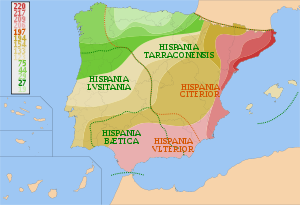This article needs additional citations for verification. (February 2022) |
| Millennium: | 1st millennium |
|---|---|
| Centuries: | |
| Decades: | |
| Years: |
| 309 by topic |
|---|
| Leaders |
| Categories |
| Gregorian calendar | 309 CCCIX |
| Ab urbe condita | 1062 |
| Assyrian calendar | 5059 |
| Balinese saka calendar | 230–231 |
| Bengali calendar | −284 |
| Berber calendar | 1259 |
| Buddhist calendar | 853 |
| Burmese calendar | −329 |
| Byzantine calendar | 5817–5818 |
| Chinese calendar | 戊辰年 (Earth Dragon) 3006 or 2799 — to — 己巳年 (Earth Snake) 3007 or 2800 |
| Coptic calendar | 25–26 |
| Discordian calendar | 1475 |
| Ethiopian calendar | 301–302 |
| Hebrew calendar | 4069–4070 |
| Hindu calendars | |
| - Vikram Samvat | 365–366 |
| - Shaka Samvat | 230–231 |
| - Kali Yuga | 3409–3410 |
| Holocene calendar | 10309 |
| Iranian calendar | 313 BP – 312 BP |
| Islamic calendar | 323 BH – 322 BH |
| Javanese calendar | 189–190 |
| Julian calendar | 309 CCCIX |
| Korean calendar | 2642 |
| Minguo calendar | 1603 before ROC 民前1603年 |
| Nanakshahi calendar | −1159 |
| Seleucid era | 620/621 AG |
| Thai solar calendar | 851–852 |
| Tibetan calendar | 阳土龙年 (male Earth-Dragon) 435 or 54 or −718 — to — 阴土蛇年 (female Earth-Snake) 436 or 55 or −717 |

Year 309 (CCCIX) was a common year starting on Saturday (link will display the full calendar) of the Julian calendar. In the Roman Empire, it was known as the Year of the Consulship of Licinianus and Constantius[1] (or, less frequently, year 1062 Ab urbe condita). The denomination 309 for this year has been used since the early medieval period, when the Anno Domini calendar era became the prevalent method in Europe for naming years.
- ^ Smith, William (1862). A New Classical Dictionary of Greek and Roman Biography, Mythology and Geography (Partly Based Upon the Dictionary of Greek and Roman Biography and Mythology). HarperCollins. p. 1008.